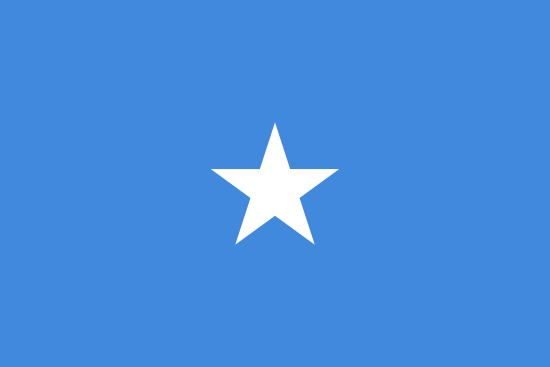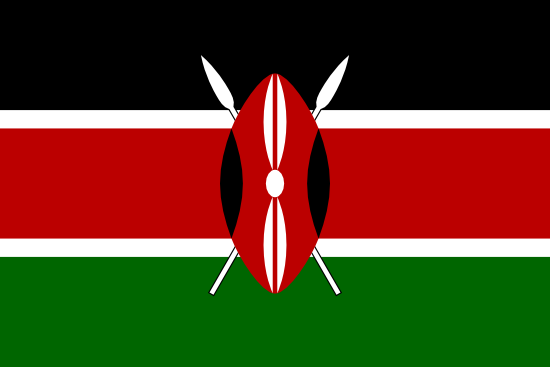Somalia Overview
Somalia is located in the Horn of Africa, and is also called the “Land of Anarchy”. It has the longest coast of Africa, with a coastline towards the Indian Ocean in the east and the Gulf of Aden in the north, but is better known for its pirates and kidnappings.
| Capital: | Mogadishu |
| Biggest city: | Mogadishu |
| State: | republic |
| Language: | Somali |
| Religion: | Islam |
| Surface: | 637 657 km² |
| Population: | 10.4 million (2013) |
| Population density: | 15 residents per km² |
| Life expectancy: | 50 year |
| Illiteracy: | 62% |
| Currency: | Somali shilling (SOS) 1 shilling = 0.01 kr |
| GDP per capita: | $ 600 (2010) |
| Time difference: | +2 hours |
| Electricity: | 220 V AC, 50Hz |
| National Day: | July 1st |
| Country area code: | 252 |
| 2-Letter country abbreviation: | SO (See more abbreviations on Abbreviationfinder) |
| Business: | agriculture 76%, service sector 16%, industry 8% |
| Climate: | mainly warm desert climate, with higher rainfall in the south |

No other country in modern times has suffered such a collapse as Somalia, and the country has for periods in practice ceased to exist as a state. After the collapse of the state in 1991, all normal economic activity has been impossible.
Somalia is today one of the poorest countries in the world. There is no functioning central government and there is a great shortage of most things. The conflict has also intensified the contradictions between different sections of the population.
The northwestern region, Somaliland, declared itself an independent state in 1991, but has not been recognized by any other country. The northeastern region of Puntland declared independence in 1998. The southern part of the country is ruled by various rival groups.
The level of education is very low, and a large part of the population can neither read nor write. Child mortality is among the highest in the world, and many children die before the age of five. One in four children suffers from acute malnutrition. Maternal mortality is also high, and the situation of women is further complicated by the fact that genital mutilation is common.
Periodically, a large part of Somalia’s population has been on the run, abroad or within the country. In 2007, the United Nations High Commissioner for Refugees (UNNHCR) estimated the number of internally displaced persons in Somalia at 400,000. Almost as many Somalis are fleeing to other countries. The returning refugees often have minimal access to education, health care and more.
Resources are scarce and the situation is exacerbated by the fact that Somalia is regularly hit by natural disasters in the form of droughts and floods. The lack of food and clean water is great.
The films “Black Hawk Down”, “A Hijacking” and “Captain Phillips” all take place in Somalia, but have in reality been filmed elsewhere. However, the documentaries “Stolen Seas”, “The Project” and “Fishing Without Nets” were filmed in Somalia.
ELECTRICAL OUTLET
Electricity and electrical outlets in Somalia
Voltage: 220 V
Frequency: 50 Hz
Type of plug: C
Need an adapter: No, you do not need an adapter.
CLIMATE AND WEATHER
Weather in Mogadishu
| Climate | Jan | Feb | Mar | Apr | May | Jun | Christmas | Aug | Sep | Oct | Nov | Dec |
| Average temperature °C | 27 | 27 | 28 | 29 | 28 | 27 | 26 | 26 | 26 | 27 | 28 | 27 |
| Day °C | 29 | 29 | 30 | 30 | 30 | 28 | 27 | 27 | 28 | 28 | 29 | 29 |
| Night °C | 26 | 26 | 27 | 27 | 27 | 26 | 25 | 25 | 25 | 26 | 26 | 26 |
| Rain (mm) | 0 | 0 | 0 | 50 | 50 | 70 | 60 | 40 | 20 | 30 | 40 | 0 |

Hargeisa
Hargeisa is the capital of the breakaway republic of Somaliland in northern Somalia. It was also the capital of British Somaliland, which corresponds to the same land area as present-day Somaliland.
The city is the main resort in northern Somalia, and is located in a dry and mountainous area. The city has 450,000 residents. From the city comes Hussein Bisad, one of the tallest people in the world, with a length of 244 cm.
Mogadishu
According to Countryaah, Mogadishu is the capital of Somalia, and the country’s largest city. The city is located on the Benadir coast towards the Indian Ocean, and has served as an important regional port city for centuries. Since the collapse of the central government in 1991, rival militias have been fighting for the city for 18 years. Years of domestic political unrest and uncontrolled uprisings have turned the city into one of the most dangerous and lawless cities in the world.
Since it was a long time since a census could be conducted in the country, data on population is mainly calculations and estimates, and therefore the city’s stated population usually varies greatly depending on the source, from about 1 million up to 2.5 million. The United Nations has estimated the population at 1.1 million (2007).


